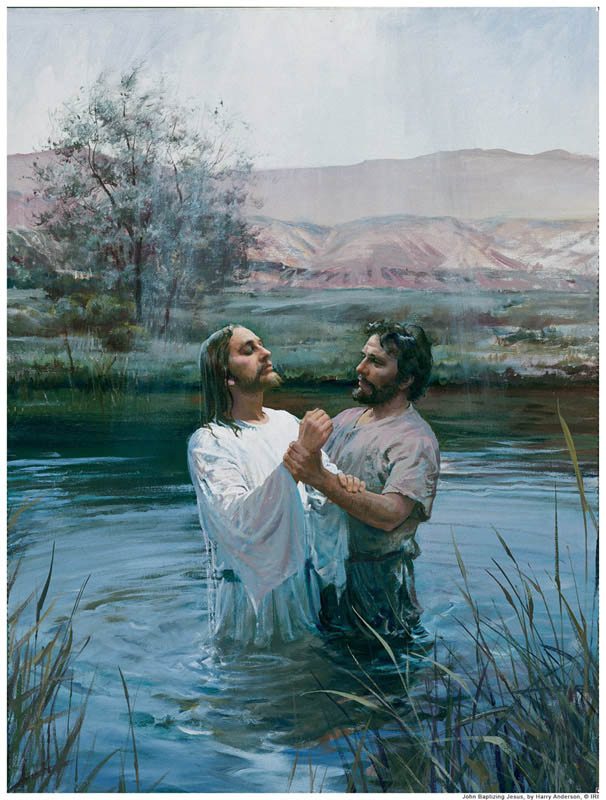Baptism in Mormonism
 Mormons believe in baptism by immersion for the remission of sins for people who reach the “age of accountability,” or at least eight years old. Children under age eight and people who are mentally incapable of differentiating between right and wrong or understanding the process of repentance are saved in innocence through Christ’s atonement. Mormons do not believe in original sin and therefore do not baptize babies. The atonement of Christ lifted the curse of Adam from all mankind, and thus men are accountable only for their own sins. Parents are responsible for the misbehavior of their little children.
Mormons believe in baptism by immersion for the remission of sins for people who reach the “age of accountability,” or at least eight years old. Children under age eight and people who are mentally incapable of differentiating between right and wrong or understanding the process of repentance are saved in innocence through Christ’s atonement. Mormons do not believe in original sin and therefore do not baptize babies. The atonement of Christ lifted the curse of Adam from all mankind, and thus men are accountable only for their own sins. Parents are responsible for the misbehavior of their little children.
Christ was baptized by immersion to “fullfil all righteousness.” He was the only sinless man ever to live on earth, and therefore had no need of baptism, but He submitted to the ordinance as an example for us. Baptism is essentially the gate to the strait and narrow path that leads to exaltation.
Baptism must be performed by someone who holds true authority from God. God restored His priesthood authority to Joseph Smith and Oliver Cowdery by the hands of heavenly messengers—the resurrected John the Baptist; and Peter, James, and John. This authority had been lost to the western world when the original apostles were killed, and the differing philosophies of men caused many Christian sects to be created, none with the true doctrines or authority of Christ.
Mormons are baptized in the name of the Father, the Son, and the Holy Ghost. At baptism, they promise to take upon themselves the name of Christ, to always remember Him and keep His commandments. They promise to witness of Christ by word and example. In return, Christ cleanses them of their sins. At baptism, a person is reborn sinless. Baptism by immersion represents death of the old person and rebirth as a new soul in Christ. Baptism also represents the death and resurrection of the Savior, and because of this, all Mormon baptismal fonts are below ground level.
Upon baptism, a person becomes a candidate for the laying on of hands to confer the permanent and constant gift of the Holy Ghost. The constant companionship of the Holy Ghost differentiates worthy Mormons from unworthy ones, and from the population at large. The Holy Ghost is a testator, a revelator, and he warns of danger and conveys truth. With this gift, each Mormon is able to receive revelation to help him in his own life, his work, responibilities, and the people he is responsible for in his family or church callings. All of the charismatic gifts are found in the Church, and they come through the Holy Ghost.
The New Testament indicates that baptisms for the dead were done during the time of the Apostle Paul (see 1 Corinthians 15:29). Jesus Christ said, “Except a man be born of water and of the Spirit, he cannot enter into the kingdom of God” (John 3:5). Since all are in need of baptism by true authority, and billions have lived on the earth without that opportunity, Mormons perform these rites as an act of service. The dead have passed on to the Spirit World to await resurrection and judgment. Since baptism is a physical ordinance, it can’t be performed by spirits. However, spirits have volition, personality, and free will, and can accept or reject such ordinances as they wish. All Mormons are providing is the opportunity.
Because He is a loving God, the Lord does not damn those people who, through no fault of their own, never had the opportunity for baptism. He has therefore authorized baptisms to be performed by proxy for them. A living person, often a descendant who has become a member of The Church of Jesus Christ of Latter-day Saints, is baptized in behalf of a deceased person. This work is done by Church members in temples throughout the world.
